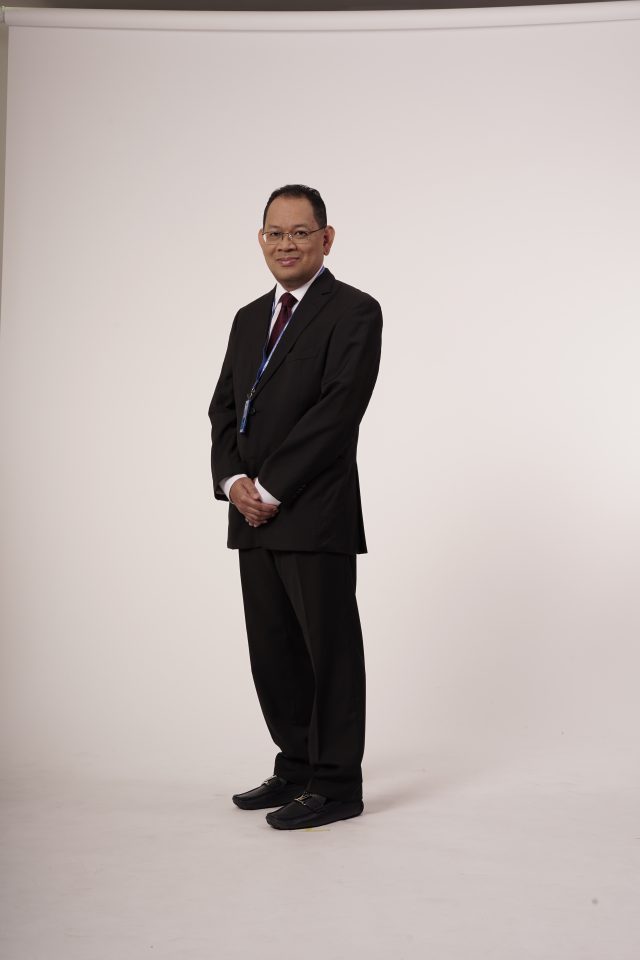Since performing the country’s first heart transplant, IJN has continued to make strides in giving patients with heart failure a new lease of life
One of the chief concerns for people with heart disease is having their condition develop to the point of requiring a heart transplant. The procedure is usually carried out when a patient has experienced heart failure, when other treatments and interventions have not worked.
While the thought of going under the knife to receive a whole new organ can be daunting, Institut Jantung Negara (IJN) Consultant Cardiothoracic Surgeon and also Clinical Director of Transplantation and Mechanical Heart Services, Datuk Dr Mohd Nazeri Nordin says it’s a necessary treatment option for some.
“We have much better medication and treatment options for heart patients now; coupled with some lifestyle changes, these can effectively help most patients manage their conditions,” he says. “However, if the heart disease is very severe, a transplant can make a significant difference in prolonging a patient’s life.”
Since carrying out Malaysia’s first heart transplant in 1997, IJN went on perform the country’s first lung transplantation in 2005 and subsequently the first double lung transplantation in October 2007. Capping off all these milestones is the fact that IJN remains the only hospital in Malaysia to offer heart transplantation and mechanical heart implantation surgery.
To date, IJN has successfully performed 23 heart transplant surgeries, 5 lung transplantations and 3 heart-lung transplantations. It’s a number that Dr Mohd Nazeri feels is relatively low when compared to the transplantation rates in other countries.
“At the top transplantation centres in countries such as the United Kingdom and Australia, about 50 to 70 heart and lung transplants are performed every year. Here at IJN, we carry out about one or two transplants a year – I think the highest number of surgeries was in 2011, when we performed five heart and lung transplants,” he says.
Aside from a limited number of specialist available to perform transplantations, a main reason for this is the lack of organ donors in Malaysia.
“Donations” that save lives
As reported in the media late last year, over 20,000 Malaysians are currently waiting for donor organs. However, on average, there are only 30 organ donor cases annually.
While this is partly due to Malaysia’s low organ donor rate, another major factor lies in the lack of awareness among family members of people who have pledged to donate their organs. Based on Health Ministry statistics, as of October 2019, around 1.3 percent of the country’s population (432,215 people) are registered as organ donors. However, in almost 80 percent of the cases handled, healthy organs were not retrieved due to opposition from family members.
Dr Mohd Nazeri thinks that this is awareness raising regarding organ donation can play an important role – particularly in highlighting the urgency and need of patients who can benefit from such donors. “It’s not a new concept, the Health Ministry has been carrying out an ongoing campaign for the past 20 years,” he says.
“But we need to further educate potential donors about communicating their wishes to their immediate family members as well. Once a patient is brain dead, it is the family members who have to decide on their behalf.”
On its part, the Health Ministry in November last year unveiled a plan to revamp how it runs organ and tissue procurement services. Among its plans is to streamline the functions of the National Transplant Resource Centre (NTRC) to effectively coordinate all organ and tissue donations upon the death of donors.
At present, the NTRC manages organ donations in Malaysia by maintaining a list of donors and organs available. Dr Mohd Nazeri explains that coordination with NTRC is crucial as a heart or lung transplant usually needs to occur within four hours of organ removal for the donor organ to remain usable.
“It can be quite an intense process,” says Dr Mohd Nazeri.
“First, a team has to go in and carry out an assessment of the organ donor, to see if the organs are suitable, and subsequently retrieve them if they are. This has to be done within two hours at most. Then we have to coordinate with the donor recipient, bring them in, and perform a final check on their suitability as well. And of course, finally, it’s preparing for and performing the surgery itself. So, we’re looking at a team of 20 to 30 personnel to do all of this within the tight time frame we have.”
He adds that another crucial component of this process is more emotional than clinical. “We take care to counsel patients who waiting for organs, and prepare them for all the possible scenarios. It can be quite overwhelming to handle, and they need to be ready to come in for surgery at any moment. But most of all, it’s the waiting that can be tough to handle,” he says.
A little from machines
While transplantation is the ideal solution for end-stage heart and lung disease, IJN has made significant efforts at exploring other forms of treatment for heart failure patients – namely, mechanical systems. “These systems are particularly useful to act as a bridge, while patients wait to receive an organ,” explain Dr Mohd Nazeri. “Some patients are unable to receive heart transplants at all, either due to their specific type of heart condition or other illnesses present such as cancer.”
Here, IJN also boasts of being the first hospital in the country to perform a mechanical heart implantation in 2005. Since then, various state-of-the-art mechanical systems have been introduced for patients suffering from end stage heart disease. These systems offer patients full circulatory support, and are lightweight enough to offer patients the freedom of mobility to continue carrying out their daily activities.
Among the latest in these are the left ventricular assist device (LVAD) and the extracorporeal membrane oxygenation (ECMO).
The LVAD is an implantable mechanical pump that helps pump blood from the ventricles to the rest of the body. A control unit and battery pack are worn outside your body and are connected to the LVAD through a port in your skin. While commonly implanted in patients awaiting a full heart transplant, the LVAD has also been proven useful as a long-term treatment option for patients with heart failure who are not good candidates for a heart transplant for various factors such as age and other underlying conditions.
Dr Nazeri shares that the centre has achieved significant success with LVAD implants, even receiving patients from other countries for the procedure. “However, the only problem is that is incurs quite a high cost and not everyone can afford it. The IJN Foundation has helped to sponsor a number patients for the LVAD, but we are definitely open to more funding – this is truly a life-saving procedure,” he says.
Meanwhile, the ECMO is a mechanical circulatory support systems that temporarily takes over the function of lungs and heart for patients experiencing failure in both these organs. Generally, it is used either post-cardiopulmonary bypass or in late stage treatment of a person with profound heart and/or lung failure.
“While the ECMO can help stabilise a patient experiencing heart and lung failure, it does not treat the underlying cause of the patient’s disease or injury,” explains Dr Mohd Nazeri. “But it is one of the most advanced tools we have to support the patient while the doctors work on treating them – it goes a long way in buying us the time we need and minimising risk to the patient as much as possible.”
With more options available to end-stage heart and lung disease patients, Dr Mohd Nazeri reiterates that the diagnosis is not necessarily a life sentence. “There are more advanced treatment methods in development right now, and these have the potential to improve the patient’s quality of life,” he adds.










